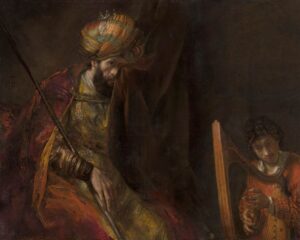The heirs of an art historian who donated paintings to the Mauritshuis museum in The Hague are asking for their paintings back, claiming that the museum violated the agreement made upon accepting the collection.
Abraham Bredius was a Dutch art historian specializing in seventeenth-century paintings. He served as director of the Mauritshuis for twenty years, between 1889 and 1909, helping to expand the collection and acquire Vermeer’s Girl with a Pearl Earring and Fabritius’s Goldfinch. Before his death in 1946, he donated twenty-five paintings from his collection to the museum, including works by Rembrandt and Jan Steen. The Bredius collection includes one of the museum’s greatest works, Rembrandt’s 1658 painting Saul & David. It also features Rembrandt’s Two African Men, one of the few depictions of free Black people in seventeenth-century Europe. The museum accepted them on the condition that they all be permanently displayed in the galleries. However, it has recently come to light that only five of the original twenty-five paintings, four by Rembrandt and one by Salomon van Ruysdael, are on view.
The case began when Bredius’s heirs, Otto and Sophia Kronig, visited the museum in 2021. They were surprised and disappointed to find very few of the works on display. After returning home and searching the museum website, they confirmed that most of the works were not being exhibited. The Kronigs are the grandnephew and grandniece of Joseph Kronig, a close friend of Abraham Bredius who some describe as his protégé. Since he had no children, Bredius left his entire estate to Kronig, leading some to speculate on whether Bredius and Kronig had a romantic relationship. According to the Kronigs and their lawyer, Bredius initially donated part of his collection to the Rijksmuseum. He later discovered that “the works were hung in a dark area near a staircase. He never wanted that to happen again.” Hence, his terms for donating paintings to the Mauritshuis were very clear-cut. However, after nearly eighty years, the museum seems to have neglected these conditions. “In reality, the museum accepted the collection but not the conditions”.
Since the museum breached the terms of accepting the collection, the Kronigs are asking that the paintings and other artworks be returned to them. They have emphasized, though, that their motives are not financial, as they do not plan on selling the collection. This is a matter of principle to them. The Kronigs have given the Mauritshuis a summons to appear before a judge. They have sent the same to the Dutch government since the Mauritshuis is a state-run museum.
While the Mauritshuis has refused to comment while the case is ongoing, its director Edwin Buijsen briefly tried to explain that three of the Bredius paintings previously attributed to Rembrandt have had their authorship questioned. While that provides some rationale for those three, it still needs to explain why the remaining seventeen paintings are kept away from public view. These paintings are not just the property of the heirs, but part of our broader cultural heritage, and their absence from public display is a loss to the viewing public.

